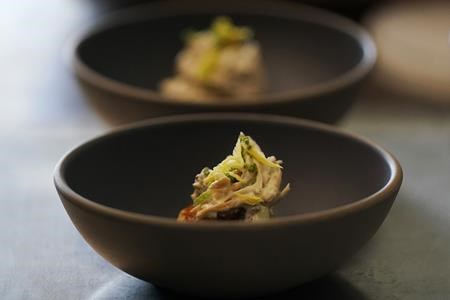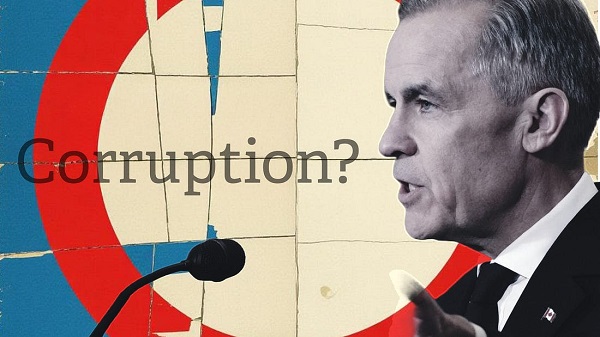Alberta
US approves chicken made from cultivated cells, the nation’s first ‘lab-grown’ meat

For the first time, U.S. regulators on Wednesday approved the sale of chicken made from animal cells, allowing two California companies to offer “lab-grown” meat to the nation’s restaurant tables and eventually, supermarket shelves.
The Agriculture Department gave the green light to Upside Foods and Good Meat, firms that had been racing to be the first in the U.S. to sell meat that doesn’t come from slaughtered animals — what’s now being referred to as “cell-cultivated” or “cultured” meat as it emerges from the laboratory and arrives on dinner plates.
The move launches a new era of meat production aimed at eliminating harm to animals and drastically reducing the environmental impacts of grazing, growing feed for animals and animal waste.
“Instead of all of that land and all of that water that’s used to feed all of these animals that are slaughtered, we can do it in a different way,” said Josh Tetrick, co-founder and chief executive of Eat Just, which operates Good Meat.
The companies received approvals for federal inspections required to sell meat and poultry in the U.S. The action came months after the U.S. Food and Drug Administration deemed that products from both companies are safe to eat. A manufacturing company called Joinn Biologics, which works with Good Meat, was also cleared to make the products.
Cultivated meat is grown in steel tanks, using cells that come from a living animal, a fertilized egg or a special bank of stored cells. In Upside’s case, it comes out in large sheets that are then formed into shapes like chicken cutlets and sausages. Good Meat, which already sells cultivated meat in Singapore, the first country to allow it, turns masses of chicken cells into cutlets, nuggets, shredded meat and satays.
But don’t look for this novel meat in U.S. grocery stores anytime soon. Cultivated chicken is much more expensive than meat from whole, farmed birds and cannot yet be produced on the scale of traditional meat, said Ricardo San Martin, director of the Alt:Meat Lab at University of California Berkeley.
The companies plan to serve the new food first in exclusive restaurants: Upside has partnered with a San Francisco restaurant called Bar Crenn, while Good Meat dishes will be served at a Washington, D.C., restaurant run by chef and owner Jose Andrés.
Company officials are quick to note the products are meat, not substitutes like the Impossible Burger or offerings from Beyond Meat, which are made from plant proteins and other ingredients.
Globally, more than 150 companies are focusing on meat from cells, not only chicken but pork, lamb, fish and beef, which scientists say has the biggest impact on the environment.
Upside, based in Berkeley, operates a 70,000-square-foot building in nearby Emeryville. On a recent Tuesday, visitors entered a gleaming commercial kitchen where chef Jess Weaver was sauteeing a cultivated chicken filet in a white wine butter sauce with tomatoes, capers and green onions.
The finished chicken breast product was slightly paler than the grocery store version. Otherwise it looked, cooked, smelled and tasted like any other pan-fried poultry.
“The most common response we get is, ‘Oh, it tastes like chicken,’” said Amy Chen, Upside’s chief operating officer.
Good Meat, based in Alameda, operates a 100,000-square-foot plant, where chef Zach Tyndall dished up a smoked chicken salad on a sunny June afternoon. He followed it with a chicken “thigh” served on a bed of potato puree with a mushroom-vegetable demi-glace and tiny purple cauliflower florets. The Good Meat chicken product will come pre-cooked, requiring only heating to use in a range of dishes.
Chen acknowledged that many consumers are skeptical, even squeamish, about the thought of eating chicken grown from cells.
“We call it the ‘ick factor,’” she said.
The sentiment was echoed in a recent poll conducted by The Associated Press-NORC Center for Public Affairs Research. Half of U.S. adults said that they are unlikely to try meat grown using cells from animals. When asked to choose from a list of reasons for their reluctance, most who said they’d be unlikely to try it said “it just sounds weird.” About half said they don’t think it would be safe.
But once people understand how the meat is made, they’re more accepting, Chen said. And once they taste it, they’re usually sold.
“It is the meat that you’ve always known and loved,” she said.
Cultivated meat begins with cells. Upside experts take cells from live animals, choosing those most likely to taste good and to reproduce quickly and consistently, forming high-quality meat, Chen said. Good Meat products are created from a master cell bank formed from a commercially available chicken cell line.
Once the cell lines are selected, they’re combined with a broth-like mixture that includes the amino acids, fatty acids, sugars, salts, vitamins and other elements cells need to grow. Inside the tanks, called cultivators, the cells grow, proliferating quickly. At Upside, muscle and connective tissue cells grow together, forming large sheets. After about three weeks, the sheets of poultry cells are removed from the tanks and formed into cutlets, sausages or other foods. Good Meat cells grow into large masses, which are shaped into a range of meat products.
Both firms emphasized that initial production will be limited. The Emeryville facility can produce up to 50,000 pounds of cultivated meat products a year, though the goal is to expand to 400,000 pounds per year, Upside officials said. Good Meat officials wouldn’t estimate a production goal.
By comparison, the U.S. produces about 50 billion pounds of chicken per year.
It could take a few years before consumers see the products in more restaurants and seven to 10 years before they hit the wider market, said Sebastian Bohn, who specializes in cell-based foods at CRB, a Missouri firm that designs and builds facilities for pharmaceutical, biotech and food companies.
Cost will be another sticking point. Neither Upside nor Good Meat officials would reveal the price of a single chicken cutlet, saying only that it’s been reduced by orders of magnitude since the firms began offering demonstrations. Eventually, the price is expected to mirror high-end organic chicken, which sells for up to $20 per pound.
San Martin said he’s concerned that cultivated meat may wind up being an alternative to traditional meat for rich people, but will do little for the environment if it remains a niche product.
“If some high-end or affluent people want to eat this instead of a chicken, it’s good,” he said. “Will that mean you will feed chicken to poor people? I honestly don’t see it.”
Tetrick said he shares critics’ concerns about the challenges of producing an affordable, novel meat product for the world. But he emphasized that traditional meat production is so damaging to the planet it requires an alternative — preferably one that doesn’t require giving up meat all together.
“I miss meat,” said Tetrick, who grew up in Alabama eating chicken wings and barbecue. “There should be a different way that people can enjoy chicken and beef and pork with their families.”
___
The Associated Press Health and Science Department receives support from the Howard Hughes Medical Institute’s Science and Educational Media Group. The AP is solely responsible for all content.
Jonel Aleccia And Laura Ungar, The Associated Press
Alberta
Diploma Exams Affected: No school Monday as ATA rejects offer of enhanced mediation

Premier Danielle Smith, Minister of Finance Nate Horner, and Minister of Education Demetrios Nicolaides issued the following statement.
“Yesterday, the Provincial Bargaining and Compensation Office wrote to the Alberta Teachers’ Association (ATA) and formally requested an agreement to enter an enhanced mediation process.
“This process would have ensured that students returned to the classrooms on Monday, and that teachers returned to work.
“Negotiating would have continued with the ATA, Teachers’ Employer Bargaining Association (TEBA) and a third-party mediator to propose a recommended agreement.
“We are very disappointed that the Alberta Teachers’ Association refused this offer. Teachers and students should also be disappointed.
“PBCO made this offer to the ATA because the union has not made a reasonable offer and this strike is impacting students. Alberta’s government is trying to put kids first and bring an end to this strike.
“The offer of enhanced mediation provided a clear path to ending it.
“We want the same things as the ATA: More teachers. More pay for teachers. More educational assistants. And more classrooms.
“This strike has gone on too long and we are extremely concerned about the impact it is having on students.
“We are willing to consider further options to ensure that our next generation gets the world-class education they deserve. After about three weeks, a strike of this nature would reach the threshold of causing irreparable harm to our students’ education.
“The ATA needs to do what is right for its members, and for all Alberta students.
“If it refuses to do so, we will consider further options to bring this strike to an end.”
Diploma exam update
November diploma exams will be optional for students.
With instructional time in schools disrupted due to the teacher strike, the November 2025 diploma exams will now be optional for students. Students who wish to write a diploma exam may request to do so, and their school boards will accommodate the request.
The optional diploma exams apply to all schools provincewide. These exams will still take place on the currently scheduled dates.
Students who choose not to write the November diploma exams can still complete their courses and graduate on time. Their final grade will be based entirely on the school-awarded mark provided by their teacher.
Choosing not to write the November diploma exams will not affect a student’s ability to apply to, be accepted by, or attend post-secondary institutions after graduation.
No changes have been made to the January and June diplomas and provincial achievement tests.
Quick facts
- Students are automatically exempted from writing the November diploma exams but can request to write them.
- School boards must allow the student to write the diploma exam if requested.
Alberta
Alberta taxpayers should know how much their municipal governments spend

From the Fraser Institute
By Tegan Hill and Austin Thompson
Next week, voters across Alberta will go to the polls to elect their local governments. Of course, while the issues vary depending on the city, town or district, all municipal governments spend taxpayer money.
And according to a recent study, Grande Prairie County and Red Deer County were among Alberta’s highest-spending municipalities (on a per-person basis) in 2023 (the latest year of comparable data). Kara Westerlund, president of the Rural Municipalities of Alberta, said that’s no surprise—arguing that it’s expensive to serve a small number of residents spread over large areas.
That challenge is real. In rural areas, fewer people share the cost of roads, parks and emergency services. But high spending isn’t inevitable. Some rural municipalities managed to spend far less, demonstrating that local choices about what services to provide, and how to deliver them, matter.
Consider the contrast in spending levels among rural counties. In 2023, Grande Prairie County and Red Deer County spent $5,413 and $4,619 per person, respectively. Foothills County, by comparison, spent just $2,570 per person. All three counties have relatively low population densities (fewer than seven residents per square kilometre) yet their per-person spending varies widely. (In case you’re wondering, Calgary spent $3,144 and Edmonton spent $3,241.)
Some of that variation reflects differences in the cost of similar services. For example, all three counties provide fire protection but in 2023 this service cost $56.95 per person in Grande Prairie County, $38.51 in Red Deer County and $10.32 in Foothills County. Other spending differences reflect not just how much is spent, but whether a service is offered at all. For instance, in 2023 Grande Prairie County recorded $46,283 in daycare spending, while Red Deer County and Foothills County had none.
Put simply, population density alone simply doesn’t explain why some municipalities spend more than others. Much depends on the choices municipal governments make and how efficiently they deliver services.
Westerlund also dismissed comparisons showing that some counties spend more per person than nearby towns and cities, calling them “apples to oranges.” It’s true that rural municipalities and cities differ—but that doesn’t make comparisons meaningless. After all, whether apples are a good deal depends on the price of other fruit, and a savvy shopper might switch to oranges if they offer better value. In the same way, comparing municipal spending—across all types of communities—helps Albertans judge whether they get good value for their tax dollars.
Every municipality offers a different mix of services and those choices come with different price tags. Consider three nearby municipalities: in 2023, Rockyview County spent $3,419 per person, Calgary spent $3,144 and Airdrie spent $2,187. These differences reflect real trade-offs in the scope, quality and cost of local services. Albertans should decide for themselves which mix of local services best suits their needs—but they can’t do that without clear data on what those services actually cost.
A big municipal tax bill isn’t an inevitable consequence of rural living. How much gets spent in each Alberta municipality depends greatly on the choices made by the mayors, reeves and councillors Albertans will elect next week. And for Albertans to determine whether or not they get good value for their local tax dollars, they must know how much their municipality is spending.
-

 International15 hours ago
International15 hours agoPoland’s president signs new zero income tax law for parents with two children
-

 International16 hours ago
International16 hours agoAustralian territory bans men from women’s prisons in national first
-

 Business6 hours ago
Business6 hours agoFord’s Whisky War
-

 Business2 days ago
Business2 days agoCutting Red Tape Could Help Solve Canada’s Doctor Crisis
-

 Focal Points4 hours ago
Focal Points4 hours agoTrump Walks Back His Tomahawk Tease from Zelensky
-

 Automotive3 hours ago
Automotive3 hours ago$15 Billion, Zero Assurances: Stellantis Abandons Brampton as Trudeau-Era Green Deal Collapses
-

 Business1 day ago
Business1 day agoFederal Budget 2025: A responsible media would ensure Canadians know about the dismal state of federal finance
-

 Business1 day ago
Business1 day agoEthics on Ice: See You Next Year








